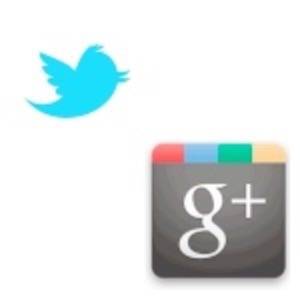Starting next week, SpongeBob SquarePants will come to Twitter with a story specially made for the micro-blogging platform. Here’s the pitch from Nickelodeon: “The Ice Race Cometh: A Twitter-Tale, was conceived and developed for Twitter by the SpongeBob SquarePants writing team and will run from Tuesday, July 12, to Friday, July 15. The story will be told via multiple tweets and images throughout each day to set scenes and advance the action involving SpongeBob and his friends as they prepare for The Bikini Bottom Great Sleigh Race.” Tune in, or retweet, or something.

OK, I realize that ReadWriteWeb is not your go-to site for SpongeBob SquarePants news. And normally, the notion of SpongeBob – on Twitter or elsewhere – is probably the sort of pitch that most tech bloggers would roll their eyes at and ignore or delete.
But with the flurry of interest over the last week-and-a-half over Google Plus and questions about its potential implications for Twitter and Facebook alike, I’ve been curious to see how some of the storytelling efforts we’ve seen on Twitter may or may not transfer to Google’s new social network.
What sorts of storytelling forms will we see on Google Plus? Will they build on some of the wonderfully creative endeavors on Twitter? Will authors have a stronger voice on Twitter or on Google Plus? Will they be able to better engage with readers in one network or the other?
Collaborative Storytelling on Twitter
SpongeBob is quite a latecomer to Twitter in that regard, and an awfully commercial one at that. As more companies and brands start to broadcast their stories on Twitter, it may be that the noise becomes overbearing and the format dull. But in the meantime, we’ve seen a number of innovative uses of Twitter for storytelling. The works of James Joyce and Shakespeare have been retold in short snippets, for example, and artists like Neil Gaiman and Tim Burton have utilized Twitter for collaborative storytelling projects, engaging other users in helping create new stories, 140 characters at a time.

Twitter is well-suited for that. Thanks to the public nature of the service and of course to the hashtag, anyone can easily add a line to a story – an online version of the Surrealists’ exquisite corpse game, where users can contribute one line, without any clear sense of where others plan to take the narrative. Crowdsourcing creativity, if you will.
The Rise of Storytelling on G+
This morning, Louis Gray tagged me in a post on Google Plus for a new tradition in-the-making – a Saturday Story Circle. The idea behind the #StoryCircle (he used the hashtag to mark the post) is to share a short story and then tag other people so they too can post on the topic.
In some ways, this feels rather akin to the memes from the early days of blogging or from Facebook status updates: everybody post on this pre-ordained topic, change your profile picture, and so on. The use of the hashtag to mark the nascent tradition draws from Twitter, true, but the rest seems rather conventional. This raises several questions: how will we track stories and memes on Google Plus – the hashtag? And (how) will we develop new conventions for storytelling on the site?
The notion of storytelling on Plus is intriguing as the new social network has introduced a new form for chronology and for networking. Unlike Twitter, for example, the posts on Plus aren’t simply a stream. Comments bump old posts back to the top of your feed. And there are more granular controls with sharing, so the stories we tell needn’t be de facto public.

That emphasis on privacy and control is something that Google highlights, and sure, there are definitely stories we’d be better off not sharing with everyone on the Internet. But the open and public nature of Twitter – along with the short, rapid-fire updates, has given rise to some interesting new ways of creating stories.
Something Old, Something New
As it stands, the stories shared on Google Plus feel an awfully lot like blogging. As in, here’s my story: feel free to comment. That’s not necessarily a bad thing. But it’s not really a new thing. I’ll include the standard “It’s still early” caveat here, of course, because I don’t mean to say that after 10 days we’ve seen the creative culmination of G+. No doubt new forms of collaboration will appear. Humans are clever that way.
But it’s too easy (and too elitist) to mark the arrival of SpongeBob to Twitter as “the end days” for creative expression there. Indeed, it’s still early with our experimenting with the shorter, collaborative format. Echoing all those who say they’re not giving up on Twitter, I’d say that even with my enthusiasm for Google Plus, I’m still keen to see more stories crafted on Twitter – pineapples under the sea notwithstanding.










